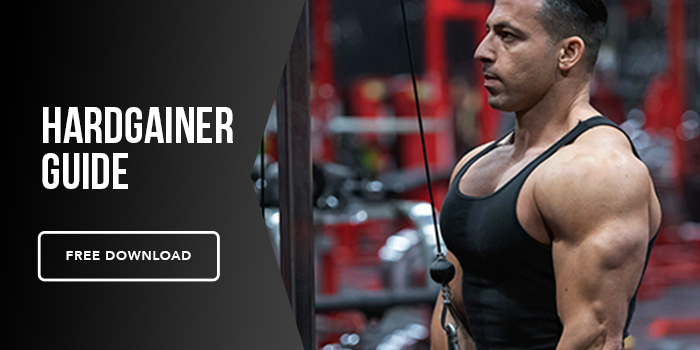There are a whole host of reasons people struggle putting on muscle. Over the course of the next couple weeks, I’ll be going through each of them individually, so that I can get a little more in depth. So be on the lookout for those articles as they come up.
For today, I’d like to focus on -
Programming
Ectomorphs struggle to put on weight. They’re usually the skinnier guys at the gym who swear they have tried the best of the best workout programs. It’s true, they might have. But a good workout routine isn’t so much in the program, as it is in the way you approach it.
Frequency
In order to grow we need to send a signal to the body that tells that particular muscle to grow, otherwise nothing will obviously happen. The NATURAL lifter can only create that signal by placing a load on the muscle (aka working out). That signal is maximized after a workout but normally comes back down after 24-48 hours back to baseline. If we know this, then we know ideally we want this signal elevated back up after 48 hours so that the body is continually being told to grow. So it makes sense then, to spread your volume out, and hit the muscle more frequently throughout the week to create that signal. If you only did a chest day, then you’re spending the rest of the week with no (or a very weak) signal towards that muscle.
Intensity
We have a minimum recoverable volume (least amount of total sets per muscle to stimulate growth), and maximum recoverable volume (maximum amount of total sets per muscle before you can’t recover properly and hurt your gains). It is within this range that we individually all have a unique amount of sets it takes to create enough stress for a particular muscle to grow.
For some it may only take 10-12 sets to get your chest to grow. Others may need 15+ sets. This is where adding isolation exercises to add more volume without overworking the nervous system can help. The point is, I can write the perfect program, but it ultimately takes time and self experimentation in the gym to figure out what the optimal range is for you. For most lifters that range will be somewhere between 10-20 sets per muscle per week. Don’t look at this as an excuse to overdo volume.
Keep in mind that it is for the more intermediate to advanced lifter who has more than 3-4 years of proper programming, and consistent eating under their belt. A more novice lifter will grow off less sets as the minimum effective volume is going to be less. Every set should be at an RIR (reps in reserve) of 1-2. You are performing the exercise until you only have 1-2 more reps and then your form crumbles. This ensures you are pushing it hard enough, and have chosen the right weight.
Takeaway - start with 10 sets per muscle per week. Divide it up over the amount of days you are working out (this addresses the frequency reatonale). Add 1-2 sets per week and see if you are able to improve on reps or weight compared to last week. If you can’t, then bring the sets back down. After 4-6 weeks of this, take a deload week to allow the body to catch up adapting to this added volume.
Progression
We can only improve what gets measured! Use any preferred method of tracking so that you can see week to week that you are doing better over time. You may find some weeks go by with not much progression. There is where people usually fall off. This will keep you accountable to make sure you eventually push past your plateau or reassess your plan of attack.
Linear Progression (better for lifters < 3+ years proper lifting) - Each week lower the rep by 1-2 and increase the weight 2.5-5lbs.
Week 1 - Bench Press 3x10 with 135lbs
Week 2 - Bench Press 3x8 with 140lbs
Week 3 - Bench Press 3x6 with 145lbs
Double Progression (better for lifters > 3-4+ years) - Take a set rep range for a given exercise, and each week try and increase the reps until all sets hit the upper limit. Allows for continued progress when you can’t continually up the weight by 5lbs every week of linear method.
Week 1 - Bench Press 3x10-12 with 135lbs (let's say you hit 12,11,10 reps for each set)
Week 2 - Bench Press 3x10-12 with 135lbs (12,12,11)
Week 3 - Bench Press 3x10-12 with 135lbs (12,12,12)
At this point since you’ve hit all sets for the upper end, you can now up to 140 and repeat the cycle till you hit all sets for 12 reps again.
Focusing on stimulating the muscles enough times each week, finding the proper volume and intensity, and correct ways to ensure you are progressing week to week by tracking, are all the most crucial tenets of the most effective workout program. If you are lacking any of these elements, you are just slowing the rate at which you will grow. I guarantee a year from now, you’ll find you are stronger, and bigger than any other time in your lifting career.






